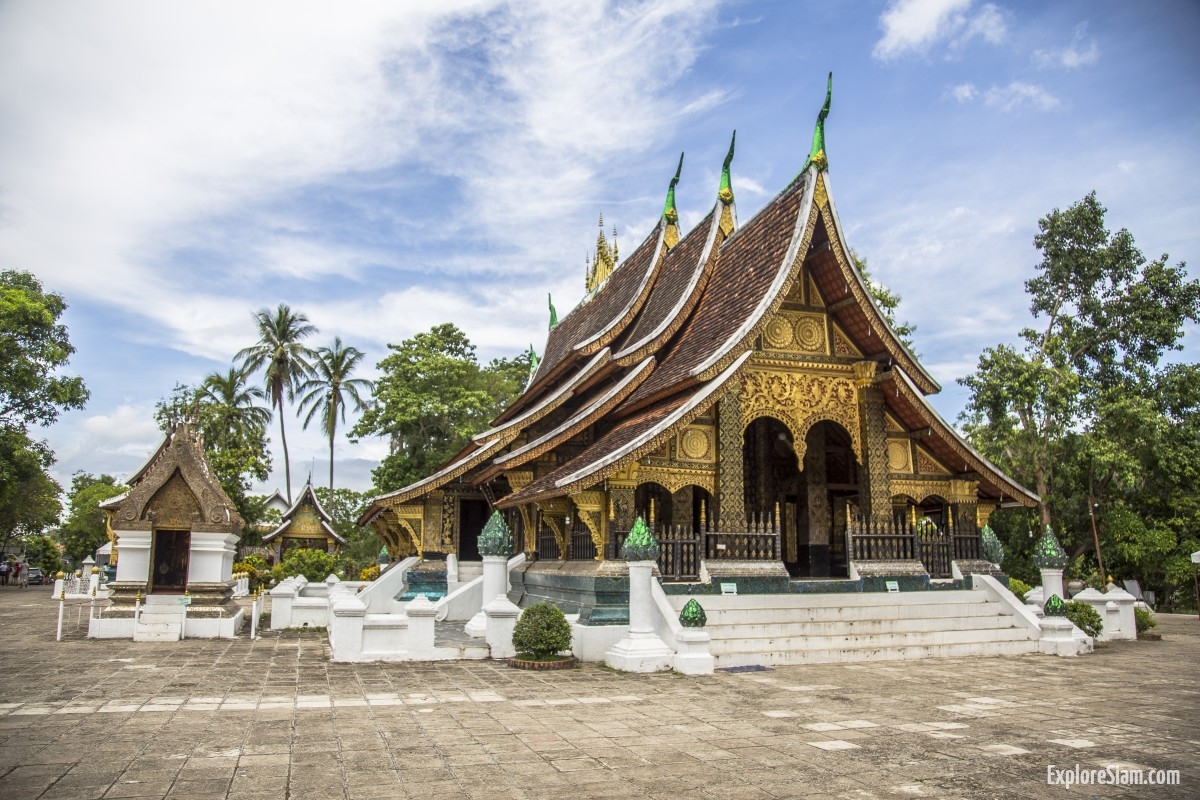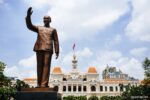Nestled in the verdant mountains of northern Laos, where the Mekong and Nam Khan rivers converge, lies Luang Prabang, a city steeped in history, culture, and spirituality. Often described as the heart and soul of Laos, Luang Prabang’s serene atmosphere and timeless beauty make it a haven for travelers seeking both adventure and tranquility. Designated a UNESCO World Heritage Site in 1995, this small city enchants visitors with its fusion of traditional Laotian and colonial French architecture, its vibrant Buddhist culture, and its stunning natural landscapes.
A Journey Through Time
Luang Prabang’s history is rich and varied, dating back to the 8th century when it was known as Muang Sua. The city gained prominence in the 14th century when it became the capital of the Lan Xang Kingdom under King Fa Ngum. Renamed Luang Prabang after the golden Buddha statue, the Prabang, which was a gift from the Khmer monarchy, the city flourished as a center of Buddhist learning and devotion.
Early History and Founding
The early history of Luang Prabang is shrouded in myth and legend, with tales of its founding by the Lao people and their migration from the northern regions of Southeast Asia. Archaeological evidence suggests that the area was inhabited for centuries before it rose to prominence as a royal capital. The establishment of Luang Prabang as a political and religious center marked the beginning of its transformation into the spiritual heart of Laos.
The Golden Age
The 14th century marked the beginning of Luang Prabang’s golden age, under the reign of King Fa Ngum. The city became a thriving cultural and religious hub, attracting scholars, monks, and artisans from across the region. The introduction of Theravada Buddhism played a crucial role in shaping the city’s identity, leading to the construction of numerous temples and monasteries that still stand today.
A Tapestry of Temples
The spiritual essence of Luang Prabang is best experienced through its numerous temples, known locally as wats. There are over 30 temples within the city, each a testament to the city’s deep-rooted Buddhist traditions.
Wat Xieng Thong
Among the most revered is Wat Xieng Thong, the “Temple of the Golden City.” Built in 1560 by King Setthathirath, this temple is an exquisite example of classic Laotian architecture, with its sweeping roof extending almost to the ground. The temple complex features ornate carvings, intricate mosaics, and the stunning “Tree of Life” mosaic, which tells the story of Buddha’s enlightenment. Wat Xieng Thong is more than just a place of worship; it is a symbol of Luang Prabang’s artistic and spiritual heritage.
Wat Mai Suwannaphumaham
Another significant temple is Wat Mai Suwannaphumaham, or simply Wat Mai. Known for its five-tiered roof and golden bas-reliefs, Wat Mai served as the residence of the head of Laotian Buddhism and was the home of the revered Phra Bang Buddha statue during the Lao New Year celebrations. The temple’s history is closely intertwined with that of the Lao monarchy, having served as a royal temple and a center for important religious ceremonies.
Wat Visounnarath
Wat Visounnarath, or Wat Visoun, is the oldest operating temple in Luang Prabang. Built in 1513 during the reign of King Visounnarath, this temple is notable for its That Makmo, or “Watermelon Stupa,” named for its unique rounded dome. The temple’s museum houses an impressive collection of Buddha images and religious artifacts, offering a glimpse into the rich spiritual and cultural history of the region.
The Alms Giving Ceremony
One of the most captivating cultural experiences in Luang Prabang is the daily alms giving ceremony, or Tak Bat. At dawn, hundreds of saffron-robed monks silently walk through the streets to collect alms from the local residents and tourists. This serene ritual, where participants offer sticky rice and other food items, is a profound expression of the Laotian people’s spiritual commitment and generosity. The ceremony is a deeply moving experience, reflecting the Buddhist values of humility, compassion, and interconnectedness that are central to Laotian culture.
Natural Wonders
Beyond its spiritual and cultural treasures, Luang Prabang is surrounded by breathtaking natural beauty. The lush mountains, cascading waterfalls, and tranquil rivers offer endless opportunities for exploration and adventure.
Kuang Si Falls
A visit to Luang Prabang is incomplete without a trip to the Kuang Si Falls, a multi-tiered waterfall located about 29 kilometers south of the city. The turquoise pools at the base of the falls are perfect for a refreshing swim, while the surrounding trails offer stunning views of the cascading water and the dense jungle. The Kuang Si Falls are also home to a bear rescue center, where visitors can learn about the efforts to protect and rehabilitate the region’s endangered sun bears.
Mount Phousi
For panoramic views of Luang Prabang, a climb up Mount Phousi is a must. The hill, rising 150 meters above the city, is home to several small temples and shrines, including the golden stupa of Wat Chom Si. The summit provides a breathtaking 360-degree view of the city, the Mekong River, and the distant mountains, making it an ideal spot to watch the sunrise or sunset. The climb to the top is dotted with Buddha statues and offers a peaceful escape from the bustling streets below.
The Night Market
As the sun sets, Luang Prabang transforms into a bustling hub of activity. The Night Market, located along Sisavangvong Road, offers a vibrant array of handicrafts, textiles, and street food. The market is an excellent place to sample local delicacies, such as Lao sausages, grilled fish, and sticky rice, while browsing for souvenirs like handwoven scarves, silver jewelry, and traditional Hmong embroidery. The market’s lively atmosphere provides a perfect contrast to the city’s daytime tranquility, showcasing the vibrant culture and creativity of the Laotian people.
The Mekong River
The Mekong River, which flows through Luang Prabang, is a lifeline for the city and its inhabitants. Boat trips along the river offer a unique perspective of the region’s natural beauty and traditional way of life. One popular excursion is a visit to the Pak Ou Caves, located about 25 kilometers north of the city. These sacred caves are filled with thousands of Buddha statues left by pilgrims over the centuries. The journey to the caves, passing by picturesque villages and lush landscapes, is as enchanting as the destination itself.
Preserving Heritage
Efforts to preserve Luang Prabang’s unique heritage are evident throughout the city. The Luang Prabang Library and the Traditional Arts and Ethnology Centre play crucial roles in educating both locals and visitors about the region’s rich cultural history and the diverse ethnic groups that call it home. These institutions work tirelessly to document and promote traditional arts, crafts, and customs, ensuring that future generations can continue to appreciate and celebrate their cultural heritage.
A Blend of Old and New
While Luang Prabang remains deeply rooted in tradition, it has also embraced modernity in a way that complements its historical charm. Boutique hotels, chic cafes, and contemporary art galleries have sprung up alongside ancient temples and colonial-era buildings, creating a harmonious blend of old and new. This delicate balance between preservation and innovation allows Luang Prabang to retain its unique character while catering to the needs of modern travelers.
Festivals and Celebrations
Luang Prabang is also known for its vibrant festivals and celebrations, which provide a window into the city’s rich cultural traditions. One of the most significant events is the Lao New Year, or Pi Mai, celebrated in April. The city comes alive with parades, traditional music and dance performances, and the joyful splashing of water, symbolizing purification and renewal. The Boun Heua Fai, or Festival of Lights, held in October, is another highlight, featuring illuminated boats and lanterns that float down the Mekong River, creating a mesmerizing spectacle.
The Local Cuisine
The culinary scene in Luang Prabang is a reflection of its cultural diversity and rich heritage. Local markets, street vendors, and fine dining establishments offer a wide range of dishes that showcase the flavors of Laos. Traditional Lao cuisine is characterized by its use of fresh herbs, spices, and sticky rice, often accompanied by a variety of dips and sauces. Signature dishes include Laap (a spicy minced meat salad), Khao Piak Sen (a hearty noodle soup), and Or Lam (a flavorful stew made with meat, vegetables, and aromatic herbs).
Luang Prabang, with its spiritual aura, historical depth, and natural splendor, offers a unique and enriching experience for every traveler. Whether you are seeking spiritual solace, cultural immersion, or a connection with nature, this enchanting city invites you to explore its timeless beauty and discover the soul of Laos. From its ancient temples and vibrant markets to its breathtaking landscapes and warm hospitality, Luang Prabang is a destination that leaves a lasting impression on all who visit.





